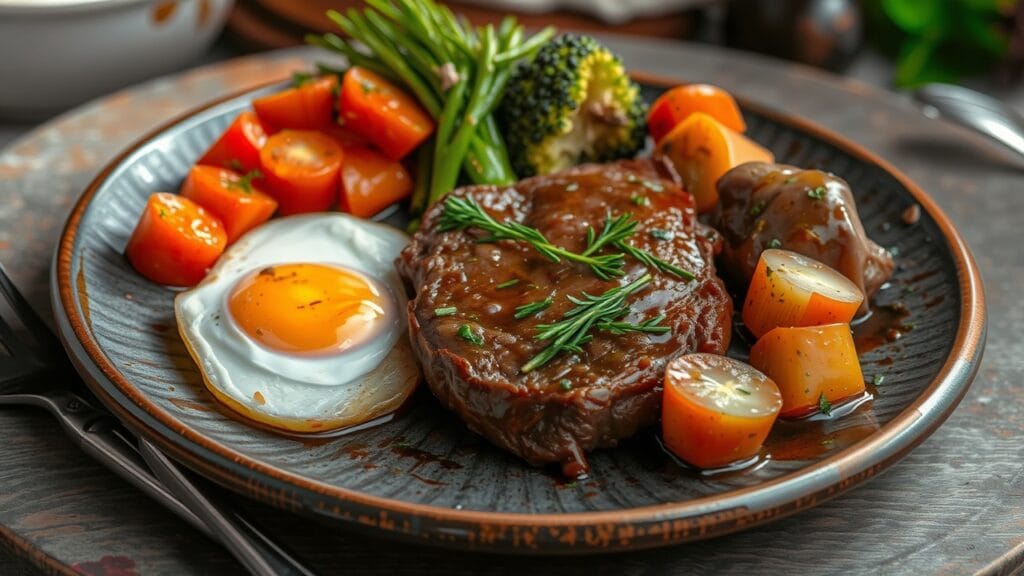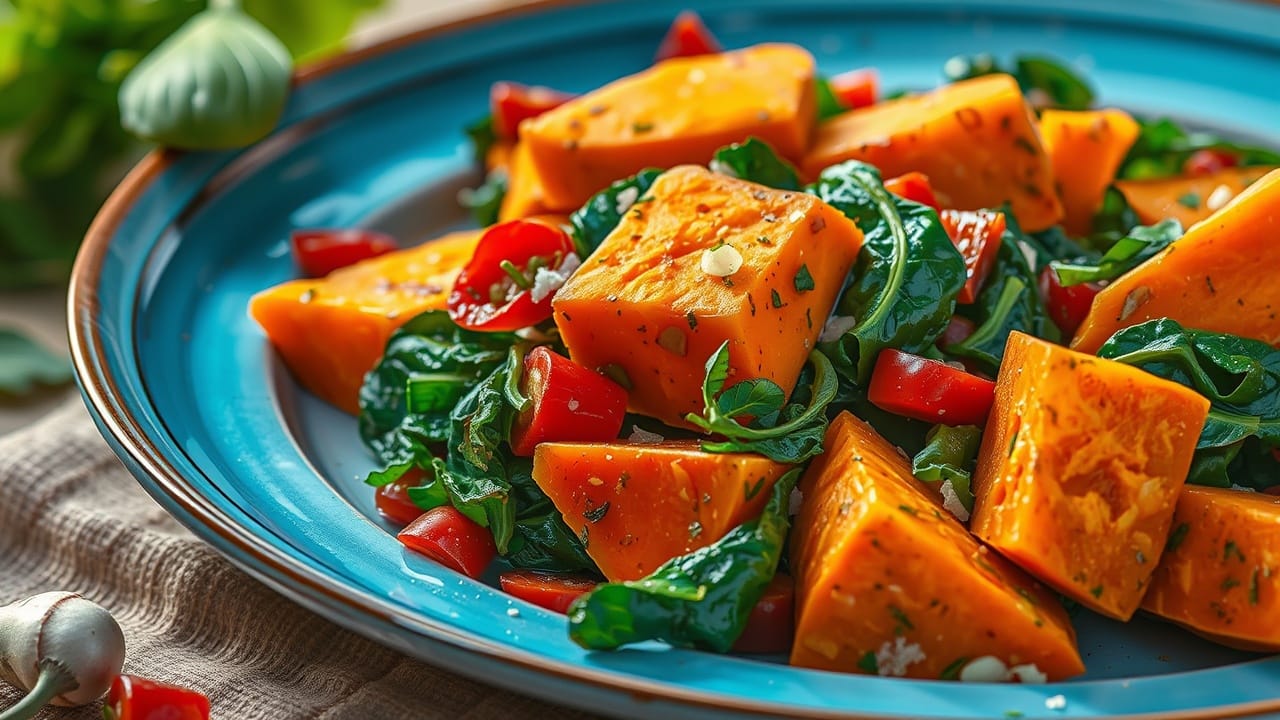If you’re looking for the ultimate guide to understanding Vitamin A, its benefits, and which foods are the richest in this nutrient, you’re in the right place! 🥕 Whether you’re here to improve your diet, boost your health, or simply out of curiosity, this article will answer all your questions and more. Let’s dive in!
What is Vitamin A and Why is it Essential?
Think of Vitamin A as the unsung hero of your health. It’s a fat-soluble vitamin that plays acrucial role in keeping your body running smoothly. But why should you care? Here’s the scoop:
- It’s your vision’s best friend. Remember being told as a kid that carrots help you see better? That’s because Vitamin A is a key player in maintaining good eyesight, especially in low-light conditions.
- It powers your immune system. Vitamin A acts like a shield, helping your body fight off infections and illnesses.
- It’s the secret to glowing skin. This nutrient promotes cell regeneration, giving your skin that fresh and healthy glow.
- It supports growth and reproduction. From kids to adults, everyone benefits from Vitamin A for proper growth, development, and overall health.
Here’s the catch, though: your body can’t produce Vitamin A on its own. That’s why it’s essential to get it from the foods you eat.
Health Benefits of Vitamin A
Why all the hype about Vitamin A? Let’s break it down into simple, real-world benefits that everyone can understand:
1. Sharper Vision
Vitamin A is like night-vision goggles for your eyes. It helps your retinas function better in dim light. Without enough Vitamin A, you might experience night blindness—where seeing in low-light conditions becomes a struggle.
2. Stronger Immune System
Picture your immune system as an army, and Vitamin A as its general. This nutrient leads the charge in defending your body against harmful bacteria and viruses.
3. Healthier Skin
Who doesn’t want glowing skin? Vitamin A helps repair skin tissue and prevents dryness. It’s also a key ingredient in many skincare products for treating acne and wrinkles.
4. Bone Health
While Vitamin D often gets the spotlight for bone health, Vitamin A also plays a supportive role. It works alongside Vitamin D to maintain strong and healthy bones.
“Skipping Vitamin A is like driving a car without headlights—it’s essential for your body to function properly!”
Symptoms of Vitamin A Deficiency
What happens if you don’t get enough Vitamin A? Here are some signs to watch out for:
- Night Blindness: Struggling to see in dim light is one of the earliest signs.
- Dry Eyes and Skin: Your eyes and skin may feel excessively dry or irritated.
- Frequent Infections: A weakened immune system makes you more susceptible to colds, flu, and other illnesses.
- Stunted Growth: For kids, a lack of Vitamin A can slow down physical growth and development.
The good news? These issues can often be reversed with the right dietary changes.
The Top Foods with the Highest Vitamin A
Now, let’s get to the juicy part: which foods are the richest in Vitamin A? There are two main types of Vitamin A sources:
- Retinoids: Found in animal-based foods like liver, eggs, and dairy.
- Carotenoids: Found in plant-based foods like sweet potatoes, carrots, and leafy greens.
Here’s a closer look at the top contenders:
Sweet Potatoes: A Nutrient Powerhouse
Sweet potatoes are the king of Vitamin A-rich foods. Just one medium-sized sweet potato provides over 400% of your daily Vitamin A needs! 🥔
- Why they’re great: They’re versatile, naturally sweet, and packed with beta-carotene, which your body converts into Vitamin A.
- How to eat them: Bake, mash, or roast them for a delicious and healthy side dish.
Carrots: The Classic Choice
Carrots are like the poster child for Vitamin A. Their bright orange color is thanks to beta-carotene, a precursor to Vitamin A.
- Why they’re great: Crunchy, sweet, and easy to add to salads, soups, or snacks.
- How to eat them: Try raw carrot sticks with hummus or toss them into a hearty stew.
Leafy Greens: Kale, Spinach, and More
Dark leafy greens like kale and spinach are Vitamin A goldmines.
- Why they’re great: They’re also rich in other nutrients like Vitamin C, calcium, and fiber.
- How to eat them: Sauté them lightly with garlic or toss them into smoothies for a nutrient boost.

Common Problems in Getting Enough Vitamin A
Eating Vitamin A-rich foods sounds easy, but it’s not always smooth sailing. Here are some common challenges:
Cooking Mistakes That Destroy Nutrients
Did you know that Vitamin A can be lost during cooking? Overcooking or frying vegetables can zap away their nutrients.
- Solution: Steam or roast your veggies lightly to preserve their Vitamin A content.
Difficulty in Identifying High Vitamin A Foods
Not all orange or green foods are created equal. For example, while sweet potatoes are loaded with Vitamin A, regular potatoes don’t offer much.
- Solution: Stick to known Vitamin A powerhouses like carrots, spinach, and liver.
Catering to Picky Eaters
Getting kids (and some adults) to eat foods like spinach or liver can feel impossible.
- Solution: Sneak Vitamin A-rich foods into meals. For instance, blend spinach into a smoothie or mash sweet potatoes into mac and cheese.
Vitamin A is more than just a nutrient—it’s a vital player in keeping your body healthy, strong, and glowing. With so many delicious food options like sweet potatoes, carrots, and leafy greens, incorporating it into your diet doesn’t have to be a chore.
In the next part, we’ll dive deeper into how to incorporate Vitamin A into your meals, easy recipes, and myths about Vitamin A you should ignore. Stay tuned! 😊
How to Incorporate Vitamin A into Your Meals
Now that you know the benefits of Vitamin A and the top foods rich in this essential nutrient, the next step is to add it to your meals! Don’t worry—getting enough Vitamin A doesn’t have to be complicated. Let’s explore some simple ways to get your daily dose.
1. Start with Breakfast
- Smoothie Boost: Start your day with a smoothie packed with Vitamin A. Blend spinach, kale, and some carrot juice with a banana and almond milk. You won’t even taste the greens, but you’ll get a healthy dose of Vitamin A to kickstart your morning.
- Eggs with Spinach: Eggs are a great source of retinoids (animal-based Vitamin A), and when paired with sautéed spinach or kale, you’ll get a great combination of both retinoids and carotenoids.
- Sweet Potato Hash: Roast some sweet potatoes and mix them with peppers, onions, and a little bit of avocado for a filling, Vitamin A-rich breakfast.
2. Boost Your Lunch
- Carrot and Hummus Salad: Add shredded carrots to a salad for a crunchy texture, and pair it with some hummus for a creamy and protein-packed side. You can also throw in some avocado for healthy fats!
- Leafy Green Wraps: Swap out regular tortillas for leafy greens like kale or collard greens. Wrap your favorite fillings like turkey, avocado, and roasted vegetables for a delicious, Vitamin A-packed lunch.
- Roasted Veggie Bowl: Roast a mix of sweet potatoes, carrots, and other colorful vegetables. Top with a bit of feta cheese, and you’ve got a nutrient-dense lunch.
3. Delicious Dinners with Vitamin A
- Sweet Potato and Lentil Stew: This hearty stew is packed with Vitamin A and fiber, thanks to the sweet potatoes. Add lentils, onions, garlic, and a variety of spices for a comforting, nutritious dinner.
- Baked Salmon with Leafy Greens: Salmon is a great source of Vitamin D (essential for bone health), but when paired with sautéed spinach or kale, it makes for a perfect Vitamin A combo.
- Stuffed Peppers: Stuff bell peppers with quinoa, black beans, and diced sweet potatoes for a colorful, tasty meal that’s rich in Vitamin A.
4. Snack Time: Fun and Easy Options
- Carrot Sticks with Guacamole: Easy to prepare and full of Vitamin A, carrot sticks paired with guacamole make for a delicious and satisfying snack.
- Sweet Potato Chips: Slice sweet potatoes thinly, bake them in the oven with a bit of olive oil, and enjoy a crunchy, homemade snack.
- Spinach Chips: These can be baked with a little olive oil and salt, giving you a tasty, low-calorie snack loaded with Vitamin A.
5. Dessert with Vitamin A? Yes!
- Sweet Potato Pie: This classic dessert can be a great way to get more Vitamin A. Use mashed sweet potatoes, cinnamon, and nutmeg for a delicious, vitamin-rich treat.
- Carrot Cake: If you’re craving something sweet, carrot cake is an excellent option. It contains carrots, which are packed with beta-carotene (the precursor to Vitamin A).
Myths About Vitamin A You Should Ignore
Despite the many benefits of Vitamin A, there are some myths and misconceptions about this essential nutrient. Let’s bust some common myths and clear up the confusion:
Myth 1: You Can Get Too Much Vitamin A from Food
While it’s true that taking excessive Vitamin A supplements can cause toxicity, it’s much harder to overdose on Vitamin A through food alone. The body regulates the conversion of beta-carotene (found in plant-based foods) into Vitamin A, so you don’t have to worry about getting too much. The only caution is with animal sources of Vitamin A (like liver), as these can cause toxicity if consumed excessively over time.
Myth 2: Carrots Are the Only Source of Vitamin A
While carrots are certainly famous for being rich in Vitamin A, they’re far from the only source. Sweet potatoes, leafy greens, bell peppers, and even eggs and liver are all excellent sources. So, if you’re not a fan of carrots, don’t worry—there are plenty of other ways to get your daily dose.
Myth 3: All Carotenoids Are the Same
Beta-carotene is the most well-known carotenoid, but it’s just one of many. Other carotenoids like lutein and zeaxanthin (found in spinach and kale) have their own unique benefits, particularly for eye health. It’s important to eat a variety of colorful fruits and vegetables to ensure you’re getting a broad spectrum of carotenoids.
Myth 4: You Don’t Need Vitamin A if You Eat a Balanced Diet
A balanced diet is important, but Vitamin A is still an essential nutrient that needs to be prioritized. Even if your diet is generally healthy, it’s still important to actively include Vitamin A-rich foods to meet your needs and maintain optimal health.
Myth 5: Vitamin A is Only Important for Your Eyes
While Vitamin A is essential for maintaining good vision, it also plays a vital role in your immune system, skin health, bone health, and reproduction. So, it’s much more than just an eye health nutrient.
Conclusion: Keep Your Vitamin A Levels in Check
Vitamin A is truly a powerhouse nutrient that plays a vital role in keeping your body healthy, strong, and glowing. By incorporating a variety of Vitamin A-rich foods like sweet potatoes, carrots, leafy greens, and eggs into your daily meals, you can easily ensure you’re getting enough of this essential nutrient.
So, don’t wait—start boosting your Vitamin A intake today for better vision, skin, immune function, and overall health! With so many delicious options, eating your way to optimal health has never been so tasty.

